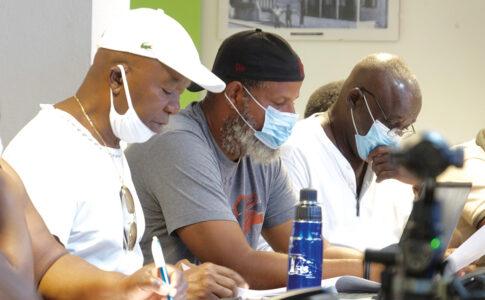A work cell, made up of the EEASM, the SAUR, the ARS and the services of the Prefecture, was created following the appearance of bromates on the distribution network. The objective is to share information, coordinate actions and allow integrated management of the “crisis”.
The last meeting was held on July 08. On this occasion, a certain number of measures were defined in order to restore the standards of potability and water quality. Remember that the problem has only been little identified on a global scale, Saint-Martin is in fact a pilot territory in this management. In this sense, the measures taken will evolve based on analytical feedback on water quality and with a constant concern for preserving public health.
First point of action, disinfection
From the first detections carried out, the EEASM set out to increase the quality control of the disinfectant (sodium hypochlorite), the review of the storage conditions, the installation of a continuous chlorine analyzer which will allow instant disinfection management. A substitution of this disinfectant by chlorine dioxide, which experiment allows a substantial drop in the bromate levels, is planned.
It should indeed be known that if many studies exist with respect to ozonation and its proven impact on the development of bromates, the disinfection process in Saint-Martin is based on the combination of chemical disinfection and the use of UV, and not on the principle of ozonation.
Second line of action: optimization of water pH
One of the parameters influencing water chemistry and the transformation of bromides into bromates is pH (water acidity). This factor is therefore subject to an adjustment (without consequence for health or public or private facilities) and will allow a drop in the bromate levels. Again, these changes are made based on feedback from the water quality analysis.
Third line of action: material evolution
The production of water by reverse osmosis requires the use of membranes. SAUR last week changed part of these membranes on one of the two production lines in operation, so as to carry out qualitative tests.
Experimentation will correlate this change of membrane with a desired drop in bromide rates. It should be noted that these production management parameters had already been identified by the EEASM and integrated into the DSP when it was renewed through modification of maintenance protocols and change of equipment.
As already indicated, the production tool is the subject of a necessary “refresher” which was planned before the appearance of bromates and which takes place over time.
The mobilization remains whole
Following these initial adjustments, the next direct debits will take place in mid-July. The EEASM, in compliance with its transparency policy, will naturally make the results available to the public and will bring together the dedicated work unit to decide on possible corrective actions. All stakeholders remain mobilized around the Bromates issue and continue to work actively to restore water quality throughout the territory.
The distribution of mineral water bottled by SAUR continues to the most sensitive audiences, in close collaboration with the Collectivity. Wider distribution solutions are being explored if the crisis were to continue. The ARS is studying the adequacy of the measures taken since the start of the crisis under the precautionary principle, the results that it will send soon will make it possible to adjust the mechanisms.
6,744 total views






No comments